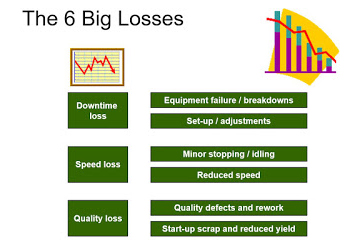Manufacturing Innovation Blog
Powered by the Manufacturing Extension Partnership

This article originally appeared on the Michigan Manufacturing Technology Center (MMTC) blog, Where Manufacturers Go for Solutions. Guest blog post by Mike Beels, Lean Program Manager at MMTC. Since 1991, MMTC has assisted Michigan’s small and medium-sized businesses compete and grow. Through personalized services fitted to meet the needs of clients, they develop more effective business leaders, drive product and process innovation, promote company-wide operational excellence and foster creative strategies for business growth and greater profitability.
In today’s age, it is amazing that some manufacturers have not yet heard of “Lean”. The question is: How are they surviving in today’s competitive market without it? The issue is that, in many ways, the customer sets pricing. If manufacturers want to be profitable, they must find ways to become more efficient and effective with internal manufacturing processes.
Target Pricing
Lean works to drive down your costs; therefore every penny you save is added directly to your profit. Companies that implement Lean typically make significant cost savings which have a very real impact on the company’s profitability. View the diagram below:
Lean Methodology
The following are a few of the Lean methodologies which can have a significant impact on your company’s bottom line:
5S and Visual Management: Completing the five pillars of 5S (Sort, Set in Order, Shine, Standardize, and Sustain) including auditing and communicating results, can have a positive impact on available square footage, machine wellness, safety, reduced lead time, and employee satisfaction and engagement. Operators take less time looking for the tools they need to do their job because they are provided at the point of use. Any time an operator walks away from their job, for any reason, it is waste and prohibits them from performing their value added tasks. Visual Management helps control raw, work in process, and finished good inventory by setting controllable min/max levels, along with many other benefits.
Standard Work: Standard Work is the best, agreed upon use of people, equipment, and resources to get the job done. Without Standard Work, the end result could be the same, but the way individuals achieve those results could be vastly different and contain a lot of waste. The true cost to an organization without Standard Work is that quality may suffer. The need to replace products because of rework and scrap can be very expensive and time consuming. Identifying the “one best way” means everyone learns and performs their tasks the same way, reducing variation and abnormalities which lead to defects. Simply stated, if employees (both on the shop floor and in the office) follow the Standard Work for their process, chances for mistakes and organizational costs are minimized.
Single Minute Exchange of Dies (SMED)/Quick Changeover (QCO): Consider the definition of SMED or QCO as the time it takes from when the last good piece was run on a piece of equipment until the first good piece of the next part is run on that same piece of equipment. When equipment is down and not running parts during certain periods of time, you are losing capacity. Depending on the product you produce and the equipment you use, this can be a matter of hours! If you could reduce that time utilizing SMED activities, the door opens for increased capacity, reduced overtime, on-time shipments, and more efficiently utilized resources. Imagine your bottom line if you could reduce the time it takes to perform a changeover by 50%!
Total Productive Maintenance (TPM): Consider TPM as the opportunity to create capacity. It is a machine wellness program that looks to keep equipment running properly. When a company has unscheduled downtime, speed loss, or quality loss, profitability can be affected for obvious reasons including defects, late delivery, added costs, and capacity loss. See diagram below.

These examples are but a few of the lean methodologies which can help bring increased profitability to your organization. Learn more about how to create a lean enterprise using these tools by contacting MMTC. MMTC offers a variety of Lean Business Solutions. For more information, contact your local MEP center.
About the author
Related Posts
Comments
- Reply

